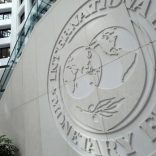What happened after the debt was forgiven? Lessons from HIPC/MDRI countries - Analysis
Mozambique – Consumption & investment falling; small interest rate cut – By Joseph Hanlon

File photo / Bank of Mozambique
“Indicators of economic activity suggest a continuation of the weakening of economic activity, mitigated by the improvement in external demand,” the Bank of Mozambique said on 10 April. “The outlook continues to be negatively affected by weak domestic demand, sustained by lower consumption and investment, as well as by less favourable financing conditions for the economy.”
The Bank of Mozambique cut the base interest rate a small amount, from 23.25% to 22.75%. In the 10 April announcement, reserve requirements (15.5%) and the interest paid on those reserves (16.25%) were unchanged. The Bank also confirmed that from June it will use a different rate as a “monetary policy rate”. The current rate is the taxa de juro da Facilidade Permanente de Cedencia de Liquidez (FPC) which is the rate that banks pay to borrow from the central bank. The new rate which will be applied from June is an interbank interest rate, taxa do Mercado Monetario Interbancario de Mocambique (taxa MIMO), currently set at 21.75%.
The Bank of Mozambique continues to build up reserves, which exceeded $2 bn in the first week of April, equivalent to 5.3 months of imports (excluding mega-projects).
Mozambique’s currency has appreciated against the US dollar with the rate falling from MT 71 = $1 at the beginning of the year to MT 67 = $1 last week. But the exchange rate with the South African rand is most important because so many imports come from South Africa, and since the beginning of the year that has varied between MT 5.4 = R 1 and MT 4.9 = R 1. This, in turn is due to the volatility of the rand, which has ranged between 12.5 and 14 to the dollar since the beginning of the year, and collapsed recently due to political factors.
Annual inflation in March was 21.6%, but the Bank of Mozambique hopes it will fall to 12% by the end of the year. Domestic debt has risen dramatically with the Bank of Mozambique becoming a major borrower; domestic debt has risen from MT 50 bn at the beginning of the year to MT 88 bn last week.
Standard Bank issued a note on 12 April which predicted a stronger Metical and that by the end of the year the rate of exchange would be 50 Meticais to the dollar. It advised investors to buy local bonds and to sell futures contracts on Meticais because they are pegged at roughly the current rate of the Metical. Standard cut its annual inflation forecast from 12.2% to 10.4%.
Comment: It would be surprising and disappointing to see the Metical appreciate to Mt 50 = $1, because the current rate of exchange would allow local producers, particularly farmers, to compete more effectively with imports. For example, at the current exchange rate, it would be profitable for the first time to produce maize and rice locally. The biggest problem is the very high interest rates and credit squeeze, which makes it impossible for farmers to borrow money to buy fertiliser and other inputs.
By Joseph Hanlon












Leave a Reply
Be the First to Comment!
You must be logged in to post a comment.
You must be logged in to post a comment.